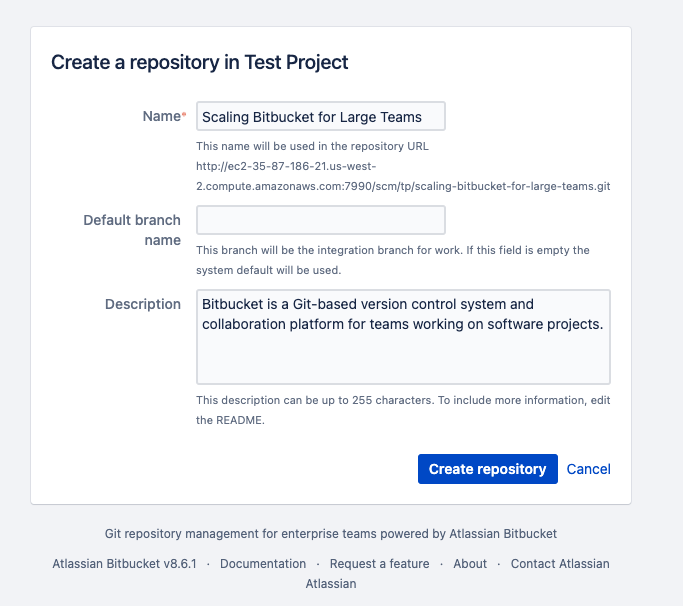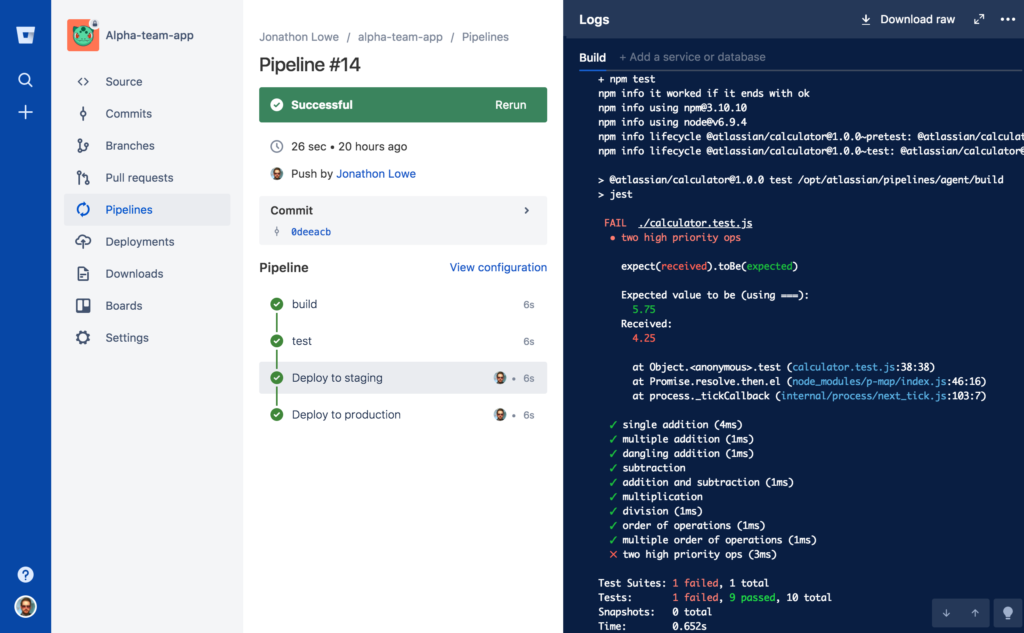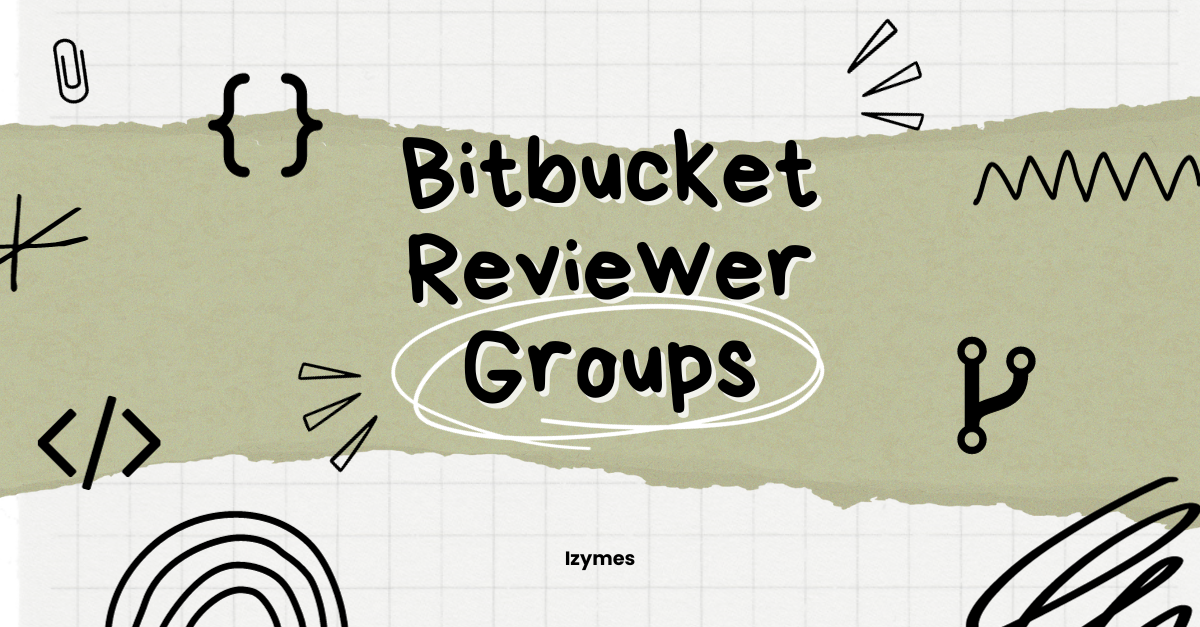Scaling Bitbucket for Large Teams: Best Practices and Tips

Introduction
Bitbucket is a Git-based version control system and collaboration platform for teams working on software projects. It allows teams to track changes to code, collaborate on development, and manage code reviews and approvals. In addition to version control, Bitbucket also offers a range of tools and features for building, testing, and deploying code, including pipelines, integrations with popular development tools, and team collaboration features.
Bitbucket plays a central role in modern software development, providing teams with a platform to manage their codebase and workflows. In this article, we will cover the following:
- The features and capabilities of Bitbucket for large teams
- Setting up and configuring Bitbucket for a large team
- Best practices for using Bitbucket with large teams, including collaboration and communication, managing code reviews and approvals, and managing branches and pull requests
- Tips for optimizing Bitbucket performance and efficiency, including using pipelines and automation, utilizing third-party integrations, and managing large repositories
- Case studies and examples of large teams successfully using Bitbucket
- Conclusion and next steps for scaling Bitbucket in your organization
Assessing the needs of your large team and choosing the right Bitbucket plan
Before setting up and configuring Bitbucket for a large team, it’s crucial to assess the needs and requirements of your team. This will help you choose the right Bitbucket plan that meets the needs of your team and budget. Bitbucket offers a variety of plans, including a free plan for small teams, a standard plan for growing teams, and an enterprise plan for large teams with advanced needs.
When assessing the needs of your large team, consider factors such as;
- The size of your team
- The complexity of your workflow and processes
- The number and size of your repositories
- Your integration and collaboration needs.
For example, if you have a large team with multiple projects and repositories, you may want to consider a plan with unlimited repositories and advanced collaboration features such as pull request reviews and merge checks.
On the other hand, if you have a smaller team with more straightforward needs, a lower-tier plan may be sufficient. It’s important to carefully evaluate your team’s needs and choose the right Bitbucket plan to ensure that you have the tools and resources you need to collaborate effectively and manage your codebase.
Setting up and configuring Bitbucket for a large team
Creating and organizing projects and repositories
Creating and organizing projects and repositories is an important aspect of managing large teams in Bitbucket. To maximize the utility of your Bitbucket instance, it is essential to create projects and repositories that are tailored to the needs of each team or project.
Projects allow teams to group their related repositories under a single umbrella, making it easier for team members to check progress or collaborate on a particular task. Creating a project for each team helps clarify which employee is responsible for which projects or tasks, making it easier to track changes over time.
In addition, organizing repositories into specific roles within each project can help with task organization as well as tracking performance among different members. It can also streamline the process of granting repository access required for collaborative work among members with certain roles or expertise. This is especially helpful when working with subcontractors hired specifically for a particular task who won’t need access to the main repository when their work is complete.
The best practice when managing large teams in Bitbucket is to create and organize projects and repositories that are tailored according to specific roles to enable efficient collaboration while protecting confidentiality. Keeping this structure updated regularly not only helps keep track of individual progress but also helps collaborate better between remote teams by providing clarity about hierarchy and responsibilities.

Setting up access controls and permissions
One of the most important steps when setting up a Bitbucket instance for large teams is setting up comprehensive access controls and permissions. Effective access control systems enable large teams to benefit from the efficient use of Bitbucket while protecting sensitive assets and code.
When creating effective access controls, it is important to keep in mind that there are two main use cases:
-Enforce permissions for users accessing repositories
-Manage security at the organizational level
At the repository level, users should have view or edit privileges as determined by their role in the project. This requires careful optimization of user groups, roles, branch permissions, pull requests, continuous integration pipelines and other associated features. The exact nature of permissions depends on the teams’ needs; however some common configurations include allowing administrators to have full control over the repository while allowing developers only read/write privileges on their individual branch or master branch. In addition to granting edit and view access, there are several ways admins can further refine user permission access, such as restricting commits directly to certain branches and using protected branches located outside or within a single organization.
At organizational levels, admins can enforce monorepo policies or create enforcement rules based on different organizational levels, such as team or project layers, where specific users will automatically be added/removed based on their membership status in any given project. Other organizational-level settings include IP whitelisting and 2FA support, which help prevent malicious activity within an organization’s structure. If using Server or Data Center, t is also important to consider LDAP/OAuth authentication, which allows convenient single sign-on based authentication, so users can conveniently log in with limited admin overhead for user management.
Integrating with your team’s workflow and tools
Integrating Bitbucket with your team’s workflow and existing tools will help optimize your development process and make work faster, smoother, and more efficient. Good integration strategies can ensure that everyone on the team knows what’s going on when it comes to working with code, whether that means keeping track of changes made in repos, making sure the team has easy access to critical project documents, or simply ensuring everyone is on the same page about the current status of a specific feature.
Integration with other communication tools like Slack can help keep teams up to date in real-time so they know immediately when certain tasks are completed. Additionally, connecting Bitbucket to tools that provide visibility into code trends over time, like code insights give leaders better visibility into how their team is working and how motivated they are over different periods.
Integrating Bitbucket with project management tools like Jira makes tracking progress easier and helps developers stay organized by ensuring each task has an associated bitbucket branch for easy reference and collaboration. Integrating branches in Bitbucket with CI/CD pipelines ensures that all code pushed to a repo is automatically tested for errors prior to release, reducing headaches down the road when it comes time to deploy.
Finally, finding libraries that can provide automated version control so stakeholders know precisely which branch each feature came from and when it was deployed can play a huge role. This helps teams track versions more easily across the entire organization regardless of who had ownership since previous versions were changed – ultimately increasing visibility into what went wrong if something was not as expected after a build. Integrating these types of automation techniques into your development process via Bitbucket will streamline projects significantly over time resulting in fewer headaches due to miscommunication or broken builds while improving visibility into changes over different periods as well as who made them.

Best practices for using Bitbucket with a large team
Collaborating on code and projects
When it comes to large teams and projects, achieving collaboration can be quite challenging. Whether you’re trying to get your development team on the same page or planning a strategic outreach, staying organized is key. With Bitbucket, teams can quickly set up code repositories and project workspaces that make it easier for team members to work together on projects in an organized way. Here are some best practices for scaling Bitbucket for large teams:
- Establish common project protocols. Everyone’s roles and responsibilities should be shared among all users so that everyone is on the same page regarding how contributions are made, what tasks need to be completed, etc.
- Develop peer reviews – Ensure quality assurance is being met by setting up processes for code review before changes reach production servers; decentralizing is also important in these scenarios since multiple eyes detect more errors than just one set of eyes before pushing changes through an automatic process chain.
- Use labels and tasks – use preconfigured reviewers and tasks for pull requests – utilize project or repository default reviewers and task templates to standardize the pull request review and merge process.
- Set up notifications – keeping everyone informed should be a top priority; you can use email alerts or Slack notifications to ensure that everyone gets notifications when updates happen or new tasks become available.
- Establish standards upfront -Create guidelines that can help the team avoid mistrust and disappointment later down the line; this includes aspects such as coding best practices, server configurations/deployment steps, and checklists that need completion before going live with any changes.
Managing code reviews and approvals
When developers work in teams, they must review and approve each other’s code. This is important to ensure that code quality is high and errors are found before they are integrated into production.
One way to ensure code reviews happen in a timely manner is to use Bitbucket’s built-in code review workflow. Here, developers can create pull requests to solicit feedback from other team members and facilitate discussions amongst team members. Once the entire team agrees that a piece of code is ready for release, it can be merged into the main development line without fear of introducing any serious bugs or security vulnerabilities.
Organizations with big teams should consider using Bitbucket’s two-step verification process for all pull requests, where one person first reviews a set number of lines before it gets approved, and then another person verifies it once more before it gets approved again. This enhances efficiency by ensuring that every line has been double-checked by two different people, thus reducing the chances of mistakes slipping through. Additionally, organizations can customize levels of access so only certain users have permission to approve or merge pull requests–this helps reduce confusion while maintaining constant oversight on who controls what information is committed to production.
Finally, companies relying on Bitbucket for their collaborative coding projects should leverage Bitbucket’s integration with Jira Cloud or other third-party tools for tracking tasks related to a given project–this setup helps keep everyone organized and accountable throughout the process by automatically linking each task to its corresponding pull request and resulting changesets in source control repositories like Git or Mercurial. Doing so helps make complex collaborations much easier across different teams while helping maintain a healthy codebase that can continue evolving with minimal disruption even as more lines get added over time.
Working with branches and pull requests
Working with branches and pull requests is a core part of any team’s development workflow. Every organization should have clear policies around how new code should be reviewed and merged and best practices for working with branches and related pull requests to ensure code quality and stability.
To maximize collaboration and efficiency on a project, consider training all team members in standard practices for creating pull requests, reviewing code in Bitbucket, selecting reviewers, and merging pull requests. Here are some tips to consider when working with branches and related pull requests:
-Enforce strong naming conventions for feature branches to make them easily identifiable.
-Encourage teams to keep feature branches short-lived by merging them back into the main line quickly.
-Establish automated quality checks that teams must pass before merging using the built-in Bitbucket Pipelines feature.
-Limit or minimize the number of concurrent active pull requests per repository or project to help reduce complexity around task tracking, review coordination, bug fixes, conflicts resolution etc.
-Create tags or labels associated with each new branch created on a project so that it’s possible to identify features in progress or completed tasks during the code review process at a glance.
-Take advantage of Bitbucket’s branch permissions settings which allow you to set access control levels for different repositories or workgroups within your team giving greater control over which users can push specific changesets into master/develop branch(es).
Utilizing pipelines and automation
When supporting a large enterprise team, utilizing pipelines and automated processes is essential to delivering code more quickly without compromising on quality. Automated pipelines effectively replace manual steps in the release process so that every commit along your development stream is tested for quality before it reaches production. By having particular steps and stages automated, such as code analysis, unit tests, deployment syncing and more, you can ensure that only bug-free and secure builds pass through the process – reducing development time and increasing reliability.
At the same time, automation also helps your team save time by removing tasks that require manual work or debugging time when they could be replaced with secure automated tests or validation processes steps that guarantee optimal output after deployment. Automation is also helpful if you have a large distributed team because it allows each member of the team to focus on their specialized tasks while still relying on a single consistent pipeline that supports automated testing of applications at scale – reducing development complexity and helping speed up delivery times for all stakeholders involved in the project.
By taking advantage of pipelines, automation throughout value streams leads to greater agility with less complexity and faster cycle times enabling dispersed teams to achieve faster results from large projects with extended deadlines. Moreover, scaling BitBucket workflow pipelines enables all team members to collaborate through small chunks of chaos instead of focusing on larger artifacts impacted by huge approvals before committed code finally gets deployed onto production environments. Therefore, using BitBucket pipelines make it possible for an established enterprise engineering organization to achieve better results from distributed teams cumulatively working on large projects across multiple locations — giving your team more velocity without increasing complexity or compromising on quality assurance whatsoever.
Advanced tips for optimizing Bitbucket performance and efficiency
Managing large repositories and file sizes
Managing large repositories and file sizes can challenge even the most experienced teams. As companies’ Bitbucket instances grow, they often see a decrease in team efficiency while synchronizing changes within their projects. However, some certain practices and strategies can be employed to optimize performance and scalability.
- Utilize Pull Requests: Pull requests help simplify collaboration amongst developers by providing an easy-to-follow, structured review process for code contributions. After successfully merging into a repository’s mainline branch, pull requests should be regularly cleaned up to minimize build times and Git operations.
- Repository Structure: To ensure efficient branching and merging on large projects, it is important to have an effectively organized repository structure with descriptive names for all branches, helping users navigate the system more easily. Additionally, teams should strive to keep folders manageable by containing only relevant files in each folder rather than trying to completely de-duplicate files across multiple areas of a repository structure — this helps maintain accuracy when comparisons are made using diffs etcetera.
- Smart commits: Using Smart Commits is an effective way of committing updates from external systems without having to push them through manually into Bitbucket pipelines or webhooks – this ensures real-time updates are kept in sync across development stages and environments quickly and consistently without unnecessary effort on behalf of team members.
By following these best practices when managing large repositories and file sizes with Bitbucket, teams can enjoy increased collaboration productivity – leading to greater levels of innovation at scale!
Customizing and extending Bitbucket with add-ons and integrations
When you have a large team, it is important to ensure that the software used to manage the development process meets everyone’s needs. Bitbucket has the advantage of being an open-source platform with a large plugin ecosystem, making it easy to customize and extend the tool with add-ons and integrations.
Bitbucket’s Marketplace has dozens of plugins available, which can be divided into two main categories:
-Continuous integration add-ons – Direct integration with other popular DevOps tools such as Jenkins and CircleCI helps streamline your build process while keeping your team on the same page.
-Functionality enhancement add-ons – These tools can do things such as managing release notes, providing feedback in pull requests, enforcing coding standards, creating task tracking systems and generating reports based on types of usage.
Of course how could we forget, for the team here at Izymes, this is our bread and butter. We offer 3 different Bitbucket tools that allow you to control your SCM process and workflow in Bitbucket.
- Workzone, our most popular add-on, helps enterprises to implement their Bitbucket based SCM process in a straightforward and intuitive way.
- Reminders for Bitbucket allow you to keep your Bitbucket Pull Request workflow process timely and sharp
- Organizr will allow you and your team to view, filter and manage Pull Requests with metadata across the entire Bitbucket instance

Bitbucket also offers integrations with popular collaboration tools like Slack and Jira to further enhance your team’s workflow. This ensures that all developers are up to date on task progress in real time without having to leave their workspace. Additionally, most of these plugins can be tailored to fit your team’s specific requirements; however, it is important to note that some may require installation and configuration through an administrator or third-party service provider before they are fully functional. With careful customization of Bitbucket’s capabilities through the use of plugins and integrations tailored specifically for large teams, you can optimize your existing workflows efficiently while maintaining code quality throughout the development cycle.
Utilizing advanced features like merge checks and deployment previews
Merge checks and deployment previews allow larger teams to ensure their software is consistent and of the highest quality by giving teams an easy way to review pull requests (PR) in an automated fashion. Merge checks can be configured on a repository or branch level, meaning that teams can specify the required criteria for following through with merging a PR into version control. In many cases, this can include deploying the changes to a staging environment for further testing or requiring code review from at least two different developers.
Deployment previews provide users with an easy way of seeing how a given PR will affect your application when merged without having to actually merge it. This allows developers and QA testers alike to quickly test out changes without going through a lengthy deployment process each time they want to review them. Additionally, they provide useful feedback when choosing which version of a feature should be implemented or rolled back if needed.
By utilizing advanced features like merge checks and deployment previews in Bitbucket, larger teams are able to save time, ensure high quality results and gain confidence that their code is secure before being deployed into production.
In Conclusion
In conclusion, scaling Bitbucket for large teams requires careful planning and consideration of your team’s needs and workflow. By following best practices and utilizing the many features and tools available in Bitbucket, you can effectively manage code collaboration, reviews, and approvals, as well as integrate with other tools and processes. It’s also important to regularly assess and optimize your Bitbucket setup to ensure it meets your team’s needs and supports efficient and effective software development.
As you move forward with scaling Bitbucket in your organization, it’s important to keep the following next steps in mind:
- Regularly review and assess your team’s needs and workflow to ensure Bitbucket is set up and configured in the most effective way.
- Train and educate your team on best practices for using Bitbucket, including code collaboration, reviews, and approvals.
- To optimise performance and efficiency, utilise the many tools and features available in Bitbucket, such as pipelines and automation.
- Consider integrating with other tools and processes to streamline your team’s workflow.
- Stay up to date with new features and updates from Bitbucket to take advantage of new functionality and capabilities.









